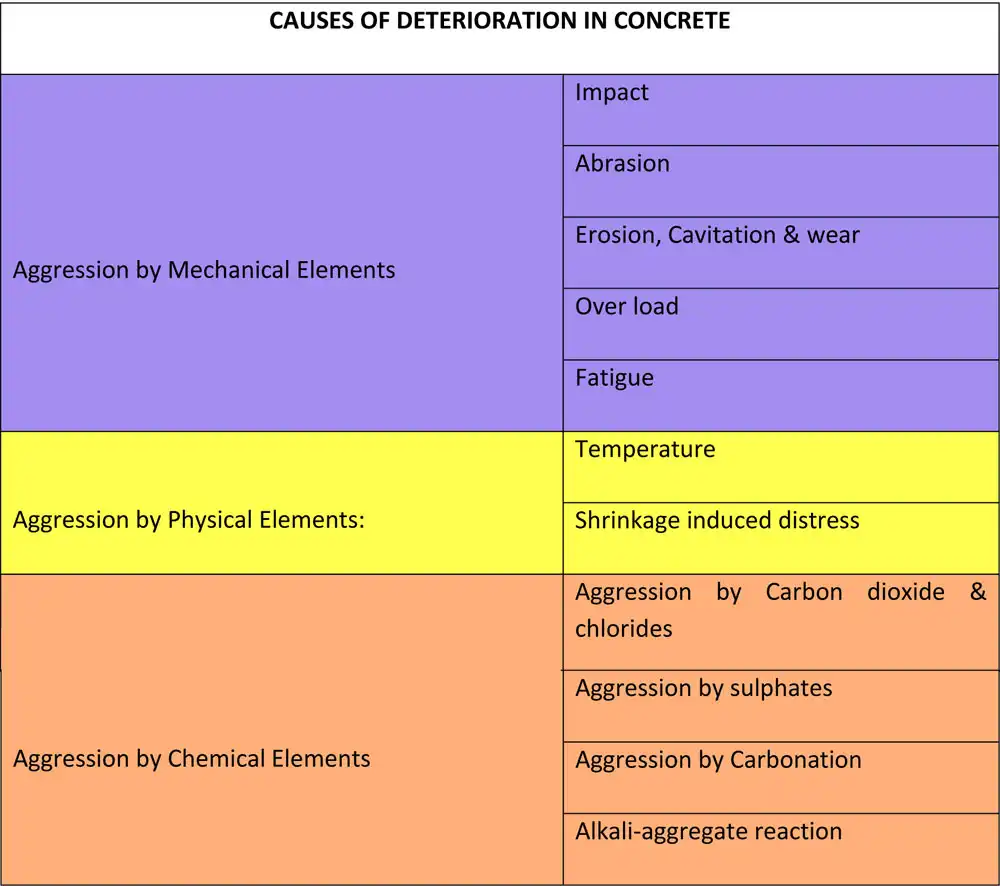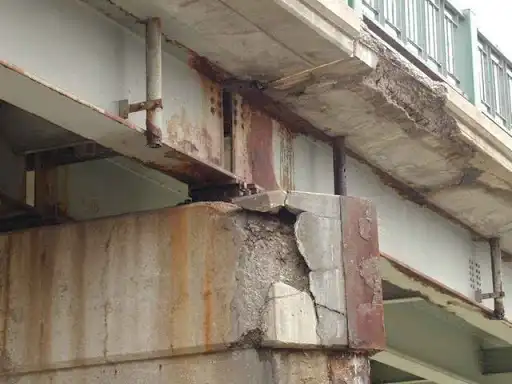When Indian Bridge Management System (IBMS) was initiated, the only parameter available to define that deterioration exits, was the availability of ratings given to various components of the bridge. Lower rating indicated the presence of distress in that component. To be able to define the reason of distress in a more qualitative term, one had to search for the observations within the inspection report, which at times the bridge inspector would miss out to define. To overcome such oversight by inspectors, a protocol was introduced within the flow of the Unified Bridge Management System (UBMS) which is called the Cause matrix.
Present article in the series on IBMS defines how this “Cause matrix” is used to define the possible cause of deterioration in the bridge and subsequently forms an important parameter to define the deterioration process in the bridge. This article dwells on the entire concept of using ratings and defined cause matrix to develop a prognosis to define the distress.
IDENTIFICATION OF THE CAUSE OF DISTRESS:
Important part of the inspection process is to complete the diagnosis/ prognosis of distress in the bridge, if any distress is observed. To be able to do this, it is critical that the Bridge Inspection Engineer understands the various deterioration processes and what type of distress causes this deterioration process to happen.
The Damage/distress in bridge is any situation that is not designed, but has occurred. Deterioration is the manifestation or propagation of this distress in a continuous manner to cause alarm. Distress occurs in specific and localized manner as much as it can occur in the overall structure. Due to the large size of bridge structure, there could be multiple types of distress, which could be localized and/or restricted to only small areas. Primary distress cause can be defined as the distress that is observed in the majority of areas and has resulted in most extensive distress from among the all the other distress causes. Such primary distress causes could exist in multiple components or be more pronounced in a single component. All other distress observed in other localized areas and or not so severe can be termed as Secondary causes. The final distress map of the bridge may be a result of multiple causes (primary cause and secondary cause) and combined effect of both primary and secondary causes. This could at times make it difficult to determine the correct primary cause. Ideally, such determination of primary cause is done by the process of elimination of the causes, rather than identification of the cause. This results in a matrix of causes. From among these identified causes, the primary cause can be confirmed.
UBMS relies on European standards to classify the various agents of distress and the cause of distress. The principle agents of distress are identified as under in the European standard on causes of distress in concrete (Refer EN 1504)
Three basic agents contributing to distress are defined as
- Mechanical elements acting on the bridge
- Chemical elements acting on the bridge
- Physical elements acting on the bridge
These three agents are further classified based on the cause as-under

Observed distress symptoms can be classified under the above classification system as shown in the table below:

FROM RATINGS TO CAUSE MATRIX
The ratings for the structural components define the possibility of distress in bridge. When the rating given to the bridge is below 5, it can be inferred that distress has started to show in the component. Distress can be termed severe if the ratings are below 2. When the distress is seen to have initiated, it warrants a need to identify the cause of distress; it’s extent and severity of the distress in order to define the possible remedial intervention required.
IBMS flow of activities demanded the client to decide the requirements of testing to be done on the bridge. In a situation, if the client differs the testing, the system moves ahead to the next cycle of inventory and inspection then the opportunity to identify the cause of distress is lost. Such a management of bridge would not follow the famous dictum of “Stitch in time save nine”. Every cycle where the decision to conduct tests and determine the correct cause of distress is different, the bridge moves from preliminary to serious to critical state and ultimately one has to decide to replace the bridge as repairs become uneconomical. With every cycle the ratings are logically going to move from 5 downwards till the severity becomes extreme and the bridge has to be declared unsafe for movement (Rating < 1).
Under UBMS, the flow of activity has been modified to warrant the identification of distress for all bridges which have ratings below 5. Mandatorily every bridge, which has even one structural rating below 5, needs to be inspected to identify the cause of distress. A new input field is created under inspection, wherein once the ratings are confirmed by the Bridge inspector, the bridge inspector has to generate the diagnosis / prognosis for the cause of observed distress. This is done for the entire bridge structure by assigning ratings to the various causes. Each of the 11 reasons of distress (Refer Table 1) are assigned one rating number to form a 3 by 5 matrix. Based on the type of distress, a matrix is formed. Each of the three basic agents of distress and their sub causes are represented by ratings, which are given during the inspection process, for each element in the distress matrix. To maintain uniformity within the UBMS system the rating values are from 0 to 9 with “9” being assigned for a situation of virtual No Distress and “0” being assigned to a situation where the distress is extensive in extent and severity. (Similar to component ratings given during inventory) The matrix is a 3 X 5 matrix. One has to bear in mind that this matrix is for the whole of the bridge structure and not for the individual component. Once the assignment of rating is done for distress, this is used to identify the method of testing to be adopted. The location of the test on the component of the bridge is decided by the Structural ratings matrix.
COMBINED INFLUENCE OF STRUCTURAL RATINGS AND CAUSE MATRIX ON MANAGEMENT OF BRIDGES:
Distress-Cause matrix created generates a historical data on the various causes affecting the bridge. This matrix serves as the starting point for the creation of deterioration model for the bridge. Many times it is impossible to attend to the distress on its first appearance. This happens due to paucity of funds or the distress being at the very inception stage wherein it does not offer any danger to the safety of the bridge. When during the next cycle the distress is observed to have further aggravated and become more severe, the ratings assigned within the cause matrix decreases. As the rating decreases, for various causes, it gives us a picture as to what is happening in the bridge and also creates a deterioration vs time map. The availability of ratings in cause matrix allows better control in the hands of the management to decide the point when remedial intervention is absolutely required without further delay. In most BMS, with just the structural ratings, the decision to provide remedial measure is left hanging with no protocol that would justify an immediate remedial intervention. This is what happened on the MORTH project wherein 147 bridges were identified for having distress based on ratings assigned to structural components in the first cycle of inventory/ inspection. Since no other data was available the local engineer relied on information available with him to decide what course of action has to be taken. Absence of data and photographs of distress at the field level probably was one reason for their inaction. It was only post 2nd cycle that field engineers were granted access to IBMS data wherein they could verify the correctness of data collected and understand the severity of the situation on hand. Now under UBMS, the introduction of cause matrix not only identifies the initiation of distress (based on structural ratings) but it also identifies the reason why the structural component is showing distress by stating the cause and its severity. This justifies the field engineer responsible for management to initiate action based on the priority and ranking of the bridge in the network.
From the cause matrix and ratings of structural members, UBMS derives an integrated approach to management of distress in bridges in any network. The time elapsed since observation of distress (the cycle in which ratings starts to go under 5) to the time the cause is attended, gives us the clue as to how the particular type of cause results in propagation of deterioration in the bridge component. This relationship is used in UBMS to define the integrated approach to management of bridges which is the topic of my next article.
CONCLUSION:
By the introduction of the protocol to determine the reason for distress by identification of various causes affecting the bridge structure, it has resulted in generation of a prognosis as to the reason for distress in the bridge structure. Such a prognosis is confirmed or rejected by proper testing protocol resulting in confirmation of the correct reason for distress. Once the reason for distress is identified, it is easier to decide on the type of remedial intervention required. UBMS moves ahead from assignment of ratings to component to determination of the cause matrix (both primary and secondary causes) thereby ensuring internal quality assurance within UBMS.
About the author:

The article is authored by SACHIDANAND JOSHI, Emeritus Chair—IBMS @ IDDC Engineers Pvt. Ltd.
All of the author’s career has been devoted to the Rehabilitation of structures. He has been a team leader to over 2000 inspection, repair and rehabilitation projects. Having seen the various causes of distress so closely and the extent of damage and loss that is caused by ZERO maintenance of various structures, he decided to devote his energy to conceptualize a system that can avoid this scenario. From that urge to minimize distress, came his focus on Asset Management Program.
SACHIDANAND JOSHI is presently working passionately to implement Asset Management Programs in various facades of the Civil Engineering industry in India. The author has ha flair to conceptualize projects and get the team to complete the micro-planning.


